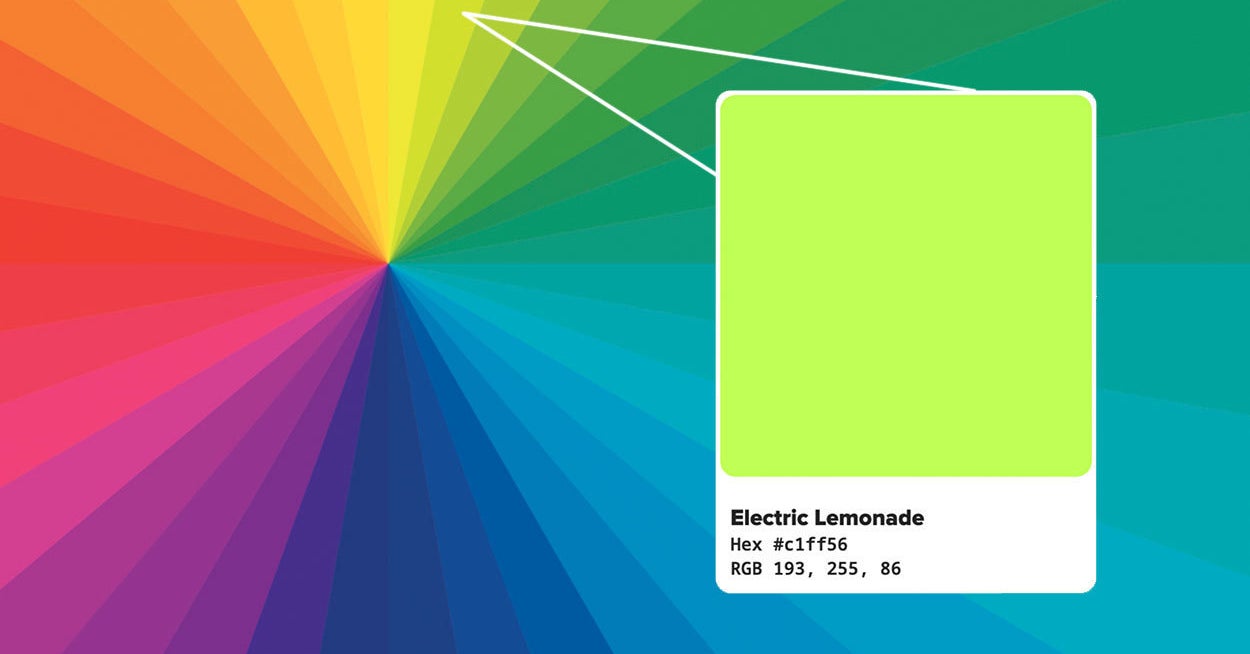Introduction
In the ever-evolving world of e-commerce, businesses continuously search for innovative methods to enhance their sales and customer engagement. Two powerful marketing techniques that have gained considerable traction in this digital landscape are upselling and cross-selling. These strategies have proven invaluable in increasing revenue and fostering lasting customer relationships. Upselling entails enticing customers to purchase a higher-priced or upgraded product version, amplifying its value proposition and delivering an enhanced experience. On the other hand, cross-selling involves offering complementary or related products that complement the customer’s initial purchase, elevating their satisfaction and fulfilling additional needs.
Both techniques serve as powerful tools to boost sales, maximize profitability, and cultivate customer loyalty. By leveraging these strategies strategically, businesses can drive growth, unlock new opportunities, and provide tailored recommendations to their customers. Today, we’ll explore the differences between these two tactics, understand their significance, uncover best practices to implement them effectively on Shopify, and highlight some top-rated apps that can supercharge your upselling and cross-selling efforts.
What is Upselling on Shopify?
Upselling is a sales technique used on Shopify to encourage customers to purchase a higher-priced or upgraded version of a product they are interested in. It involves presenting customers with alternative options offering additional features, better quality, or higher value, enticing them to spend more. The goal of upselling is to increase the average order value and maximize revenue from each customer.
To implement upselling effectively on Shopify, merchants can showcase premium versions of products, highlight the added benefits and value they offer, and provide persuasive product descriptions. For example, offering a more advanced smartphone model with improved specifications and features can tempt customers to upgrade their purchases. By utilizing upselling strategies, Shopify merchants can increase their sales and enhance the customer’s experience. When done right, upselling can help customers make more informed purchasing decisions by presenting options that better meet their needs and preferences.
What is Cross-Selling on Shopify?

Cross-selling is a marketing technique employed on Shopify to encourage customers to purchase additional or related products in conjunction with their initial purchase. It involves suggesting complementary items that complement or enhance the primary product the customer intends to buy. Cross-selling aims to increase the average order size and diversify the customer’s product selection. On Shopify, cross-selling can be implemented by displaying related or recommended products on the product page, during checkout, or through targeted email campaigns. For instance, if a customer is purchasing a camera, cross-selling could involve suggesting camera accessories like lenses, tripods, or camera bags.
Cross-selling provides benefits for both the merchant and the customer. Merchants can generate additional revenue by encouraging customers to explore and purchase related items. On the other hand, customers can discover complementary products that enhance their original purchase, making their overall shopping experience more satisfying and convenient. By employing effective cross-selling strategies on Shopify, merchants can increase their sales, improve customer engagement, and foster long-term customer loyalty.
Difference Between Upselling and Cross-Selling
Upselling and cross-selling are two distinct marketing techniques utilized in e-commerce, including on the Shopify platform. While both strategies aim to boost sales and enhance the customer experience, their approach, and focus differ. Understanding the differences between upselling and cross-selling is crucial for effectively implementing these techniques on Shopify.

Let us have a closer look into both and understand the difference.
Focus
The concept of Upselling primarily encourages customers to purchase a higher-priced or upgraded version of the product they want. The goal is to persuade them to spend more by offering additional features, functionalities, or premium options. On the other hand, cross-selling aims to promote complementary or related products to the one the customer is considering or has already added to their cart. The intention is to broaden the customer’s purchase and enhance their overall shopping experience.
Product Relationship
Upselling involves offering a better or more advanced version of the same product. For instance, suggesting a laptop with higher processing power and storage capacity to a customer who initially showed interest in a lower-end model. Cross-selling involves suggesting products that complement or are commonly purchased together with the main item. For example, recommending a printer, laptop bag, and additional software to accompany a laptop purchase.
Customer Intent
The Upselling concept targets customers who intend to purchase and are actively considering a particular product. The objective is to persuade them to choose a higher-priced alternative that meets their needs or desires better. Conversely, cross-selling appeals to customers who have already decided to purchase a specific item. The focus is on enhancing their shopping experience by suggesting additional products to enhance their chosen item’s value or utility.
Benefit Emphasis
Upselling emphasizes the benefits and advantages of the higher-priced product, highlighting how it can provide a superior experience, increased performance, or additional features that align with the customer’s needs or preferences. Cross-selling emphasizes the benefits of the additional products, showcasing how they can enhance the primary product’s functionality, convenience, or overall usage. The aim is to demonstrate the value of having these complementary items in conjunction with the main purchase.
Why Upsell and Cross-Sell are Important?

Upselling and cross-selling are vital strategies for businesses on Shopify due to their significant impact on revenue growth, customer satisfaction, and long-term business success. Let’s look into why these techniques are important.
Increased Revenue and Profitability
Upselling and cross-selling techniques can substantially boost a business’s bottom line. By offering customers upgraded or premium versions of products they are already interested in, businesses can increase the average order value and generate more revenue from each sale. Similarly, cross-selling allows businesses to introduce complementary or related products to customers, leading to additional purchases and increased overall sales volume. These strategies directly and positively impact profitability by maximizing the value derived from each customer.
Enhanced Customer Experience and Satisfaction
Upselling and cross-selling, when done right, can enhance the overall customer experience. By suggesting relevant upgrades or complementary products, businesses can help customers make informed purchasing decisions and find additional value in their purchases. This personalized approach demonstrates that the business understands the customer’s needs and preferences, leading to higher customer satisfaction and positive brand perception. When customers feel satisfied and valued, they are more likely to become repeat buyers and advocates for the business, ultimately driving customer loyalty and retention.
Improved Customer Retention and Loyalty
Upselling and cross-selling strategies contribute to building stronger customer relationships and fostering loyalty. Customers who receive tailored recommendations that align with their interests and preferences perceive the business as a trusted advisor rather than a pushy sales entity. This personalized approach builds trust and loyalty over time, increasing the likelihood of repeat purchases and long-term customer retention. Satisfied customers are also more likely to refer the business to their friends and family, expanding the customer base through positive word-of-mouth.
Improved Inventory Management
Upselling and cross-selling strategies can help businesses optimize their inventory management. By promoting upsells, businesses can encourage customers to choose higher-priced products or bundles with higher profit margins. This allows businesses to prioritize the sale of items with higher profitability, potentially reducing the need to carry excess inventory of lower-margin products. Additionally, cross-selling enables businesses to strategically promote products that may have slower sales but can be effectively sold with other popular items. This helps to balance inventory levels and prevent the stagnation of less popular products.
Competitive Advantage and Differentiation
Implementing upselling and cross-selling techniques on Shopify can give businesses a competitive edge. By leveraging personalized recommendations and tailored product bundles, businesses can differentiate themselves from competitors who may offer a more generic shopping experience. Providing customers with relevant and value-added suggestions showcases the business’s understanding of their needs and demonstrates a commitment to delivering exceptional customer service. This can help the business stand out in a crowded marketplace, attract new customers, and retain existing ones by offering a unique and satisfying shopping experience.
Shopify Upsell and Cross-Sell Best Practices

Implementing upselling and cross-selling strategies effectively on Shopify requires a deep understanding of customer behavior, preferences, and purchasing patterns. By following some proven best practices, you can maximize the impact of these techniques and drive revenue growth. The following are some key considerations that you need to keep in mind:
Understanding Customer Behavior and Preferences
To successfully upsell and cross-sell on Shopify, you must comprehensively understand your customers. Analyze their purchasing habits, preferences, and browsing behavior to identify opportunities for relevant product recommendations.
- Utilize customer segmentation: Categorize your customers based on their interests, demographics, or past purchase history. This segmentation allows you to create personalized offers that cater to specific customer groups.
- Analyze data and trends: Leverage analytics tools within Shopify to gain insights into customer behavior. Identify popular products, frequently bought-together items, and patterns that indicate potential upsell or cross-sell opportunities.
Effective Product Recommendations and Bundling Strategies
Once you clearly understand your customers, it’s time to create compelling product recommendations and strategic product bundles.
- Relevant upselling recommendations: When suggesting an upsell, offer products that complement the customer’s original purchase. Highlight the enhanced features, premium versions, or upgrades that align with their needs and preferences.
- Strategic cross-selling bundles: Bundle-related products that are commonly purchased together. For example, if a customer buys a camera, you can offer a bundle that includes lenses, memory cards, and a camera bag. This encourages customers to increase their order value by providing a convenient package.
Optimizing Product Pages and Checkout Process
The presentation of your products and the ease of the checkout process play a crucial role in successful upselling and cross-selling.
- Compelling product descriptions: Craft persuasive and informative product descriptions that highlight the unique selling points, benefits, and value of the products you’re promoting. Communicate how the upsell or cross-sell adds value to the customer’s purchase.
- Well-designed product pages: Ensure your product pages are visually appealing and user-friendly. Use high-quality images, clear product titles, and prominent call-to-action buttons for upsell and cross-sell offers.
- Streamlined checkout experience: Make the checkout process seamless and straightforward. Minimize distractions and offer clear options for adding recommended products to the cart. A smooth and intuitive checkout experience reduces the chances of cart abandonment.
Personalization and Targeting Techniques
Personalization is key to delivering a tailored shopping experience that resonates with customers and encourages them to accept upsell and cross-sell offers.
- Dynamic product recommendations: Utilize Shopify apps or plugins that leverage artificial intelligence and machine learning algorithms to generate real-time, personalized product recommendations. These recommendations are based on the customer’s browsing history, purchase behavior, and preferences.
- Targeted email marketing: Leverage email marketing campaigns to follow up with customers and present relevant upsell and cross-sell offers. Segment your email list based on customer preferences and purchase history, and craft compelling, personalized messages that resonate with each segment.
Monitoring and Measuring Success
It’s crucial to track and measure the success of your upselling and cross-selling efforts on Shopify to understand their impact and make data-driven decisions for improvement.
- Key performance indicators (KPIs): Identify relevant KPIs that align with your business goals. These may include conversion rates, average order value (AOV), revenue generated from upsells and cross-sells, and customer lifetime value (CLV). Make sure your strategies are being monitored regularly to gauge their effectiveness.
- A/B testing: Conduct A/B tests to compare different upselling and cross-selling techniques. Test product recommendations, positioning, messaging, and design variations to determine which approaches yield the best results. Use Shopify’s built-in A/B testing tools or third-party apps to streamline this process.
- Customer feedback and reviews: Pay attention to customer feedback regarding the upselling and cross-selling experience. Positive feedback indicates a successful implementation, while negative feedback provides insights into areas that need improvement. Use this feedback to refine your strategies and address any pain points.
Continuous Optimization and Iteration
Upselling and cross-selling strategies should not be set in stone. Continuously optimize and iterate on your approach to adapt to changing customer preferences and market dynamics.
- Stay updated with trends: Monitor market trends, new product releases, and customer demands. Regularly update your upselling and cross-selling offers to align with current trends and capitalize on emerging opportunities.
- Test new techniques: Experiment with new upselling and cross-selling techniques as they arise. Stay abreast of industry best practices and innovative approaches successful Shopify merchants use. Test these techniques, measure their impact, and integrate those that work well into your strategy.
- Customer-centric approach: Put your customers at the forefront of your upselling and cross-selling efforts. Gather customer data, analyze their preferences, and personalize your offers accordingly. Regularly solicit feedback and actively listen to customer suggestions to improve their shopping experience.
Top Shopify Apps for Upsell and Cross-Sell
Implementing upselling and cross-selling strategies effectively on Shopify requires a deep understanding of customer behavior, preferences, and purchasing patterns. By following some proven best practices, you can maximize the impact of these techniques and drive revenue growth. The following are key considerations to keep in mind:
ReConvert Upsell & Cross-sell
ReConvert Upsell & Cross-sell is a powerful Shopify app designed to enhance your upselling and cross-selling efforts after the purchase. This Shopify Upsell app enables you to create compelling post-purchase offers that drive additional revenue and increase customer engagement. ReConvert Upsell & Cross-sell is a highly regarded app that can significantly enhance your post-purchase upselling and cross-selling strategies on Shopify. With its customizable templates, advanced targeting, and intelligent suggestions, it helps drive additional revenue and improve customer satisfaction.
Key features:
- Customizable templates for visually appealing upsell and cross-sell offers.
- Advanced targeting options based on customer demographics, purchase history, and browsing behavior.
- Intelligent upsell suggestions that recommend relevant products to increase upsell success.
- Upsell widgets are strategically placed throughout the post-purchase funnel to maximize visibility.
- A/B testing functionality to optimize upsell and cross-sell variations.
Pricing: Free or plans starting from $4.99/month
Frequently Bought Together
Frequently Bought Together is a popular Shopify app that empowers you to showcase product bundles and recommends complementary items based on customers’ browsing and purchase history. This Shopify Upsell app enhances your upselling and cross-selling capabilities, increasing revenue and customer satisfaction. Frequently Bought Together is a valuable tool for implementing upselling and cross-selling strategies on your Shopify store. With its bundle display and personalized recommendations, you can effectively increase the average order value and provide a tailored shopping experience for your customers.
Key features:
- Display product bundles to encourage customers to purchase related items together.
- Recommend complementary products based on customers’ browsing and purchase history.
- Customizable display options to seamlessly integrate with your store’s theme.
- User-friendly interface for easy setup and management of upsell and cross-sell offers.
Pricing: $9.99/month
In Cart Upsell & CrossSell ICU
In Cart Upsell & CrossSell ICU is a feature-rich Shopify app that enables you to create compelling upsell and cross-sell offers within the shopping cart. With this app, you can maximize your revenue potential by strategically presenting relevant product recommendations at the crucial point of purchase. Cart Upsell & CrossSell ICU is a valuable tool for boosting your upselling and cross-selling efforts. You can effectively increase average order value and drive additional sales by presenting enticing offers at the cart stage.
Key features:
- Display upsell and cross-sell offers within the shopping cart to encourage additional purchases.
- Advanced targeting options based on customer behavior and purchase history.
- A/B testing functionality to optimize offer performance.
- Seamless integration with your store’s theme and checkout process.
Pricing: Free or $19.99/month
Candy Rack
Candy Rack is an all-in-one best Upsell App for Shopify to optimize your Shopify store’s revenue potential. With its comprehensive range of upselling and cross-selling features, Candy Rack empowers you to create enticing offers that increase order value and enhance the customer experience. Candy Rack is a powerful tool for implementing upselling and cross-selling strategies on Shopify. By leveraging its one-click upsells and product bundles, you can effectively increase order value and provide a seamless shopping experience for your customers.
Key features:
- One-click upsells to encourage customers to add complementary products to their orders.
- Product bundles and dynamic discounts entice customers to purchase related items.
- Customizable display options to match your store’s branding.
- Easy integration and user-friendly interface for hassle-free setup and management.
Pricing: $29.99/month
Cross Sell & Cart Upsell
Cross Sell & Cart Upsell is a feature-rich Shopify app that empowers you to create persuasive upsell and cross-sell offers throughout the customer journey. With its customizable widgets and advanced targeting options, this app helps you maximize revenue potential and provide a personalized shopping experience. Cross Sell & Cart Upsell is valuable for driving additional sales and increasing average order value. By strategically placing upsell and cross-sell offers.
Key features:
- Display upsell and cross-sell offers on various pages of your store, including product pages and the cart page.
- Advanced targeting options based on customer behavior and purchase history.
- A/B testing functionality to optimize offer performance and conversion rates.
- User-friendly interface for easy setup and customization.
Pricing: Free or $9.99/month
Frequently Asked Questions (FAQs)
Q. What are some common upselling and cross-selling techniques?
A.Upselling techniques involve offering customers a higher-priced or upgraded version of the product they are considering. Common upselling techniques include:
- Tiered pricing: Offering different price points with varying features and benefits.
- Product bundling: Suggest complementary items or accessories to accompany the main product.
- Volume discounts: Providing discounts when customers purchase larger quantities.
- Loyalty programs: Offering exclusive perks or rewards for repeat purchases.
Cross-selling techniques involve suggesting related or complementary products to customers. Some common cross-selling techniques include:
- Frequently bought together: Displaying products that are commonly purchased together.
- Product recommendations: Using personalized recommendations based on customer browsing and purchase history.
- Customers also bought: Showing products other customers have purchased alongside the current item.
- Upselling add-ons: Offering additional services or upgrades to enhance the customer’s experience.
Q. How can I measure the success of my upselling and cross-selling efforts?
A. Measuring the success of your upselling and cross-selling efforts is crucial for evaluating their effectiveness. Here are some key metrics to consider:
- Conversion rate: Measure the percentage of customers who accept upsell or cross-sell offers.
- Average order value (AOV): Track the average amount spent per transaction to see if upselling or cross-selling has increased.
- Revenue contribution: Calculate the total revenue generated through upselling and cross-selling activities.
- Customer feedback: Collect customer feedback to understand their satisfaction and perception of the offers.
- Repeat purchases: Monitor if customers who accept upsells or cross-sells are more likely to make future purchases.
Q. Are there any risks or downsides to upselling and cross-selling?
A. While upselling and cross-selling can be beneficial, it’s important to be mindful of potential risks and downsides:
- Customer perception: Poorly executed upselling or cross-selling can come across as pushy or manipulative, negatively impacting the customer experience.
- Increased complexity: Implementing upselling and cross-selling strategies may require additional planning, resources, and management.
- Purchase delays: If customers spend more time considering upsell or cross-sell options, it could lead to longer purchase decision-making processes.
- Order cancellations: Some customers may cancel their order if they feel overwhelmed or pressured by upselling or cross-selling attempts.
Q. Can I implement upselling and cross-selling manually without using apps?
A. Yes, it is possible to implement upselling and cross-selling strategies on your Shopify store manually. However, dedicated apps can simplify and automate the process, saving time and effort. Apps provide features like personalized recommendations, smart product bundling, and advanced analytics to enhance the effectiveness of your upselling and cross-selling efforts. Assess your specific business needs and resources before deciding whether to implement these strategies manually or with the help of apps.
Q.How can I ensure a positive customer experience while implementing upselling and cross-selling?
A. Creating a positive customer experience is vital when implementing cross-selling and upselling strategies. Consider the following tips to ensure customer satisfaction:
- Relevant recommendations: Provide genuinely relevant and valuable recommendations to the customer based on their browsing and purchase history.
- Transparent pricing: Communicate the pricing of upsell or cross-sell items, ensuring no hidden costs or surprises during checkout.
- Respect customer choices: Give customers the option to decline to upsell or cross-sell offers without feeling pressured. Respect their decision and continue providing a seamless shopping experience.
- Seamless integration: Consider integrating upsell and cross-sell suggestions naturally within the customer journey, such as on product pages or during checkout, without causing disruptions.
- Clear product information: Ensure product descriptions and details are easily accessible, helping customers make informed decisions about additional purchases.
- Post-purchase support: Provide excellent post-purchase support to address customers’ questions or concerns regarding their upsell or cross-sell items.
Conclusion
Upselling and cross-selling are powerful techniques for increasing sales and enhancing customer engagement on Shopify. Upselling involves offering customers a higher-priced or upgraded version of a product, while cross-selling suggests related or complementary items. Upselling and cross-selling should be done while respecting the customer’s preferences and promoting additional products. Ultimately, by incorporating upselling and cross-selling strategies into your Shopify store, you can drive sales growth, cultivate customer loyalty, and create a seamless shopping experience that benefits both your business and your customers.
Contact us to Hire Shopify Experts and unleash the true potential of your shopify store!
Source link






Leave a Reply